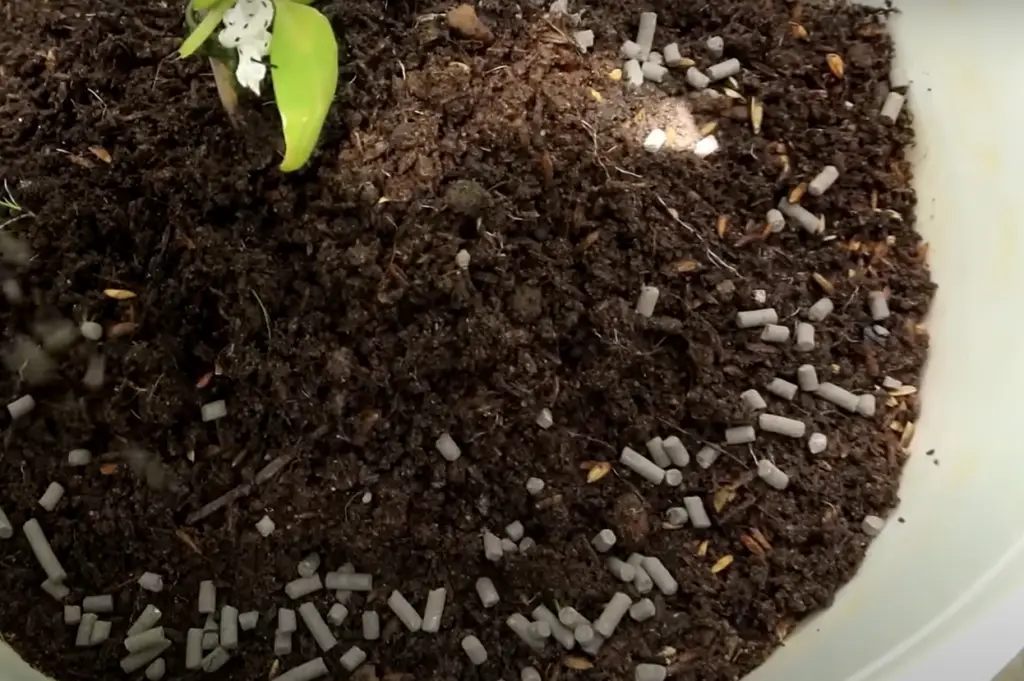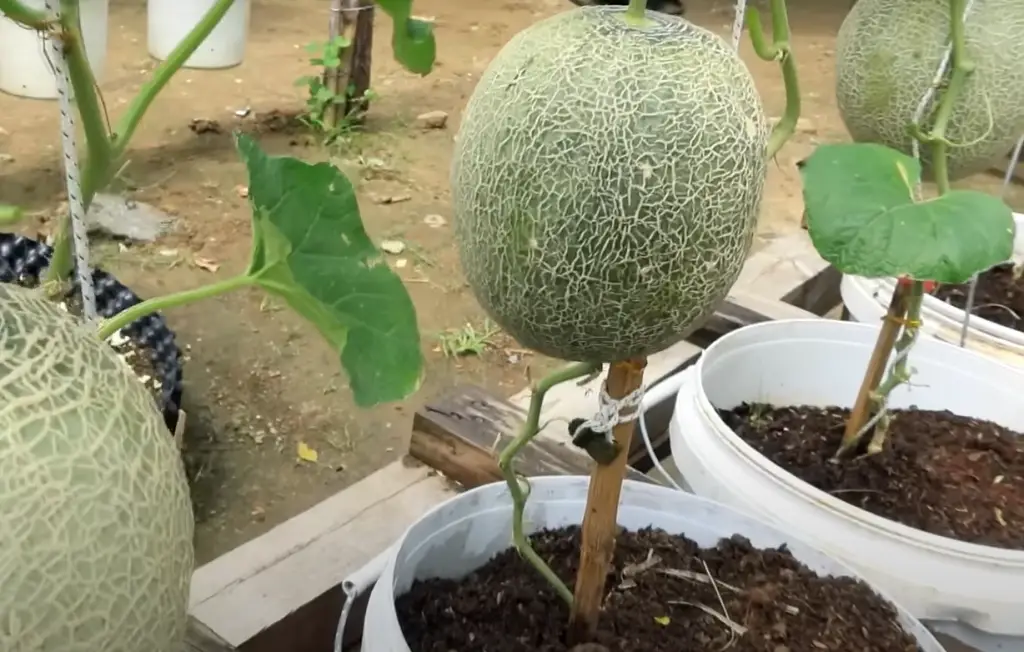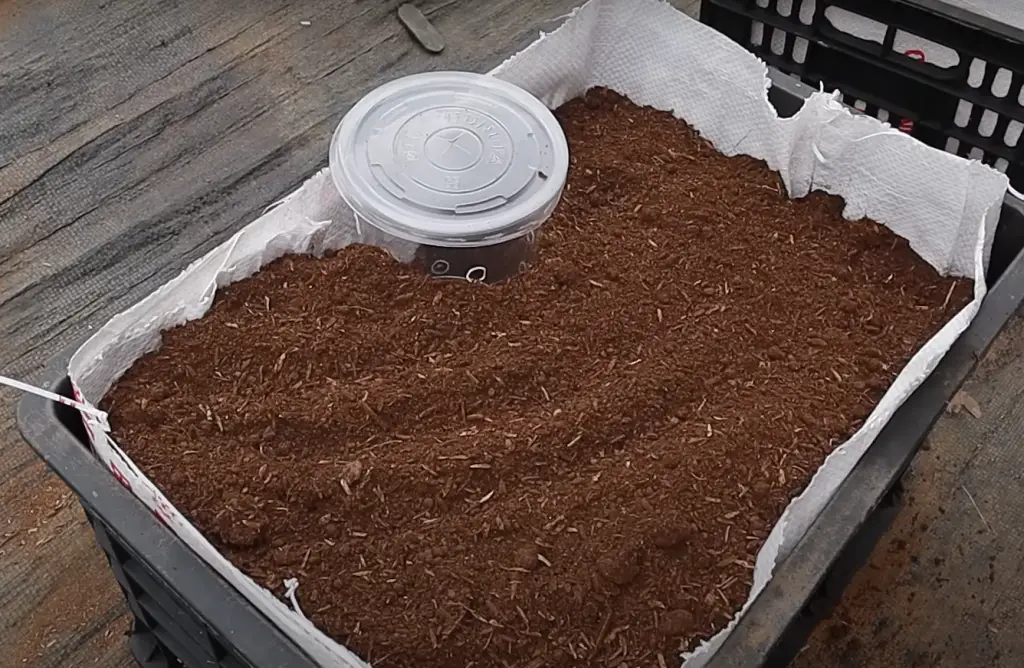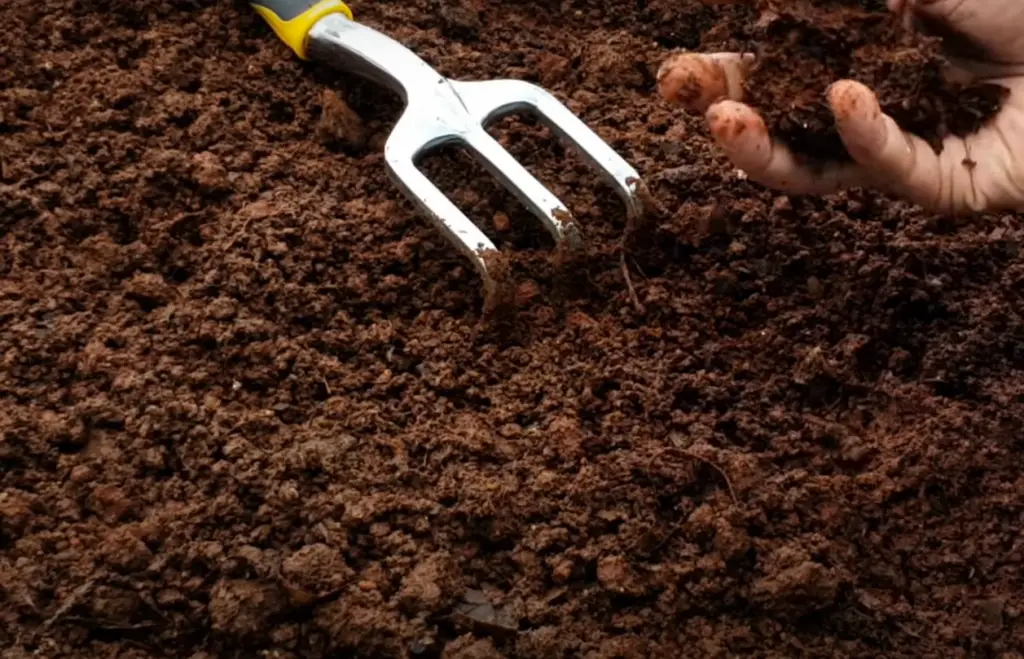Potting soil is an essential part of keeping your house plants healthy and thriving. But how long does potting soil last? If you’ve been wondering, this post holds the answers! We’ll discuss the factors that determine the lifespan of potting soil and share useful tips to make it last as long as possible. Ready to extend the life of your potting soils without sacrificing anything on nutrients or quality? Read on for our detailed guide!
How Long Does Potting Soil Last?
Potting soil is an essential ingredient for any green thumb. It helps plants grow and thrive in containers, making it a popular choice for urban gardeners. However, many gardeners find themselves wondering about the lifespan of their potting soil. While potting soil doesn’t necessarily “expire,” it can go bad over time. The soil may become compacted, losing its porous structure that allows for drainage and oxygen flow to the plants’ roots. It may also lose its nutrients, making it less effective at nourishing plants.

With proper storage and occasional additions of fresh soil, potting soil can last anywhere from one to two years. [1]
By doing so, you can make sure that your plants stay healthy for many years.Does Bagged Potting Soil Go Bad ?
Bagged potting soil can go bad. Not only will the components of the soil break down over time, but the bag itself may begin to deteriorate, resulting in a loss of nutrients and other important elements. This deterioration process may be accelerated when exposed to extreme temperatures or moisture for extended periods of time. [2]
It’s better to replace your potting soil with fresh material if you’re not certain how long it has been sitting around. In addition to ensuring that your plants are receiving plenty of nutrition, this also reduces the chance that diseases or pests will spread from one plant to another due to contamination from old potting soil.
Opened Bag
Potting soil that has been opened and exposed to air will start to dry out quickly, so it’s important to reseal the bag tightly after each use. If you have a large amount of potting soil that won’t fit in the original bag, transfer it into an airtight storage container for optimal freshness. For short-term use, you can extend the shelf life of opened potting soil by adding damp material like peat moss or sawdust to keep it moist and prevent it from becoming compacted. You also might want to add a bit of fertilizer if you plan on using this soil for extended periods of time.
Unopened Bag
An unopened bag of potting soil will last much longer than an opened one, but this doesn’t mean that it can be stored for years without any issues. Even when sealed, the components in potting soil can break down, reducing its effectiveness over time.

To ensure freshness and optimal nutrient content, store your unused potting soil in a cool dry place away from direct sunlight and extreme temperatures. It’s also important to make sure the bag is sealed tightly to prevent moisture loss.
Used Potting Soil
Used potting soil can last longer than new potting soil if it is handled correctly. If you want to reuse your used soil, be sure to clean the pots of any old plant material and debris before refilling them with soil. This will help prevent diseases from spreading between plants. [3]Additionally, you may want to mix in some fresh potting soil or add a bit of fertilizer to restore the nutrient levels that were lost over time.
By following these tips, you can extend the life of your potting soil and ensure that your plants are getting all the nutrition they need to stay healthy and thrive.
How To Tell If Potting Soil Is Bad
Potting soil plays a crucial role in the health of plants and can determine their success or failure in gardening. However, how can you determine if the potting soil you have is of poor quality? There are several ways to tell if the potting soil in your garden needs to be replaced.
Rotten smell
If your potting soil has an unpleasant, rotten smell, it’s a sign that something is wrong. This could be from bacteria or fungi growth, or even the presence of harmful pathogens like E. coli and Salmonella. [4] If you notice this smell coming from your potting soil, it’s important to discard it immediately and purchase new potting soil instead. Rotten-smelling potting soil can cause serious health issues for both you and your plants, so make sure to take all necessary precautions!
Insect infestation
Insects can be a major problem for gardeners, especially when it comes to potting soil. If you notice insects in your potting soil, it’s important to take action immediately. In most cases, the presence of insects indicates there is an underlying issue with the soil or its environment. [5]

Try removing any debris or dead plants from the area and changing out your potting soil for fresh soil. Additionally, make sure to check your plants regularly for signs of insect infestations and take all necessary steps to prevent future problems.
What if Potting Soil Gets Moldy?
If your potting soil has become moldy, it’s important to take action immediately. Mold can cause serious health issues for both you and your plants, so it’s essential to remove the affected potting soil and dispose of it properly. [6] In most cases, the affected area should be completely replaced with fresh potting soil. Additionally, make sure to inspect the surrounding environment for any signs of mold or mildew growth and take all necessary precautions to prevent future problems. With a bit of care and attention, you can ensure that your plants have access to quality potting soil year-round.
What Happens if You Use Old Potting Soil?
Using old potting soil can be detrimental to the health and growth of your plants. Potting soil contains organic compounds like peat moss, compost, and sawdust. Over time, these break down and become depleted of their nutrients. This can lead to a decrease in water retention, reduced aeration capabilities, and an overall decrease in fertility.
To ensure optimal conditions for your plants’ roots, it is important to replace your potting soil every two years or so. If you are able to identify any signs of nutrient deficiency (such as yellow leaves or stunted growth), then replacing the potting soil sooner is advised. Additionally, if the potting soil smells bad or looks slimy, then it should be discarded immediately.
When purchasing new potting soil, make sure to look for a product that contains organic ingredients such as peat moss and compost. These will help ensure your plants have access to the nutrients they need to grow strong and healthy. Additionally, adding a slow-release fertilizer every six months can help keep nutrient levels in check for longer periods of time.
Overall, replacing your potting soil every two years or so is recommended in order to maintain optimal conditions for your plants’ roots. Doing so will help ensure they get the nourishment they need to thrive and produce beautiful blooms year after year
How to Revive Old Potting Soil
If you’re stuck with old potting soil and don’t want to get rid of it, there are a few ways you can revive it. The first is to mix in some fresh organic matter such as compost or aged manure. This will help replenish the nutrients that have been lost over time. Additionally, adding a slow-release fertilizer every six months can also help maintain nutrient levels for longer periods of time.

Another way to revive old potting soil is by mixing in some perlite or vermiculite. These materials are light and airy and help increase aeration levels in the soil, which helps promote healthy root growth. You can also add a moisture-retaining agent such as peat moss, which will help keep the soil from drying out.
Finally, you can try using a soil amendment such as mycorrhizae or humic acid to help revive old potting soil. These amendments contain beneficial bacteria that can help restore nutrient levels and promote healthy root growth. Additionally, these materials are often used to prevent overall plant diseases and pests.
Overall, there are several ways you can revive old potting soil and give your plants a fighting chance to grow strong and healthy. Just remember to always replenish the nutrients in your potting mix every two years or so for best results!
Potting Soil Storage
When it comes to storing potting soil, there are a few important things to keep in mind:
- Store potting soil in a dry, cool area such as a basement or garage. Avoid direct sunlight as this can cause the nutrients to break down over time.
- If possible, store your potting soil in an airtight container, as this will help keep moisture and pests out. If using a bag, make sure it is closed tightly and stored off the ground to avoid water damage.
- Make sure to label each container with the date you purchased the potting soil, so you know exactly when it needs to be replaced. This will also help avoid any confusion when buying new soil in the future.
- Check your containers regularly for signs of mold or mildew, as this can cause serious health issues for both you and your plants. If you notice any mold or mildew, discard the soil immediately and make sure to purchase new potting soil for your garden.
- In addition to checking for signs of mold or mildew, also inspect your containers regularly for any pests such as ants or aphids. If you notice any insects on the soil, take all necessary steps to get rid of them before using the potting soil in your garden.
- Finally, if possible, avoid storing potting soil inside a home as this could lead to an infestation of insect pests. Additionally, keep children and pets away from stored containers as ingesting old potting soil could cause serious health issues.
Overall, proper storage of potting soil is essential to ensure your plants get the nourishment they need to grow strong and healthy. By following the steps above, you can help keep your potting soil in optimal condition for longer periods of time and avoid any unnecessary health issues.
Potting Soil Reuse
When storing potting soil for reuse, it’s important to use the proper techniques. Potting soil can be reused; however, it needs to be properly cleaned and stored before being used again. Here are some tips for reusing potting soil:
- Clean old potting soil by sifting out any unwanted debris or clumps of dirt. This helps ensure that your new plants won’t have a root system filled with unwanted elements.
- Make sure that the potting soil is thoroughly dry before storing. Any moisture in the mix can cause mold growth and other problems when stored over time.
- Sterilize the potting mix if necessary by heating it to at least 180 degrees Fahrenheit. This will help reduce the potential for disease in your new plants and provide a clean, healthy environment for them to thrive.
- Store the potting soil in an airtight container or bag and keep it out of direct sunlight. This helps to prevent moisture evaporation and ensures that the potting mix stays at its best over time.
By following these tips, you can make sure that your potting soil lasts as long as possible while still providing a reliable foundation for your plants’ growth. However, remember that all potting soils have a limited lifespan – no matter how well you store it – so be sure to replace your soil regularly for optimal results.
FAQ
Should Potting Soil Be Replaced Each Year?
Yes, potting soil should be replaced each year. Even if you store the potting soil properly and reuse it, its quality will decline over time.

With repeated use, it may no longer provide the nutrients or moisture that your plants need to thrive. Additionally, pests and disease-causing organisms can build up in reused potting mix; so replacing your potting soil every year is a safer option for your plants.
How Long Does Potting Soil Last?
The shelf life of potting soil depends on how well it’s stored and maintained. Properly stored and reused potting soil can last anywhere from one to three years. However, for best results, experts recommend replacing any used pots annually to ensure that your plants have access to the highest-quality potting mix.
Can I use potting soil that is 2 years old?
It is not recommended to use potting soil that is more than two years old, as the quality of the soil will have decreased significantly. Additionally, pests and disease-causing organisms may have built up in the reused potting mix; so replacing your soil every year is a safer option for your plants. If you must reuse old potting soil, make sure to sterilize the soil by heating it to at least 180 degrees Fahrenheit and adding a moisture-retaining agent such as peat moss. This will help ensure that your plants are getting the nutrients they need to stay healthy. Additionally, you can try using a soil amendment such as mycorrhizae or humic acid to help revive old potting soil.
Is Dried Out Potting Soil Still Good?
No, dried out potting soil is no longer good to use. Potting soils rely on moisture to provide the nutrients and oxygen needed for plants to thrive, so dry potting mix will not be able to support healthy growth. Moreover, if potting soil has been allowed to dry out too much, it may have developed a hard crust that can be difficult to break apart and rehydrate. If your soil appears dry or crumbly, it’s best to replace it with fresh potting mix before planting.
Does Potting Soil Need To Be Sterilized?
Potting soil may need to be sterilized if it has been used multiple times or is not stored properly. Sterilizing potting mix involves heating it to at least 180 degrees Fahrenheit, which kills off any disease-causing organisms and helps ensure that your new plants have a healthy environment in which to grow. Sterilization can also be beneficial if you are growing plants that are particularly susceptible to disease, such as tomatoes. However, it is not necessary for every type of plant.
Can You Save Potting Soil for Next Year?
Yes, potting soil can be saved for next year. However, it is important to follow the proper storage and reuse techniques in order to keep the soil in good condition. Be sure to clean out any debris or clumps of dirt and make sure that the mix is completely dry before storing. Additionally, consider sterilizing the potting soil if necessary to reduce the potential for disease. Remember that even with proper storage, potting soil will eventually lose its effectiveness; so it’s best to replace it each year for optimal results.
Will Boiling Water Sterilize Potting Soil?
No, boiling water will not sterilize potting soil. Sterilization involves heating the mix to at least 180 degrees Fahrenheit, which is much hotter than boiling point. Boiling water will not reach temperatures high enough to kill disease-causing organisms or reduce nutrient loss in potting soil. If you need to sterilize your potting soil, you will need to use an oven or a potting soil sterilizer.

Additionally, it is important to remember that sterilization isn’t necessary for every type of plant; so check with your local nursery if you’re unsure whether it’s necessary for the plants in your garden.
Will Vinegar Sterilize Potting Soil?
No, vinegar will not sterilize potting soil. Sterilization involves heating the mix to at least 180 degrees Fahrenheit, which is much hotter than boiling point. The acidity of vinegar may help reduce disease-causing organisms, but it won’t be able to reach temperatures hot enough to completely eliminate them. If you need to sterilize your potting soil, you will need to use an oven or a potting soil sterilizer. Additionally, it is important to remember that sterilization isn’t necessary for every type of plant; so check with your local nursery if you’re unsure whether it’s necessary for the plants in your garden.
Is There a Difference Between Potting Soil and Potting Mix?
Yes, there is a difference between potting soil and potting mix. Potting soil refers to soil that has been amended with organic matter and other nutrients to promote healthy plant growth. It typically contains loam, sand, and peat moss, as well as fertilizer or manure. On the other hand, potting mix is a lightweight mixture that usually contains peat moss, vermiculite, and perlite. It is primarily used to provide an environment for plants to grow in that is well-aerated and has good water retention. While potting soil may be used as a potting mix, it is not recommended for delicate plants or seedlings due to its heavier weight.
Useful Video: Does Potting Soil Ever Go Bad?
Conclusions
All in all, potting soil is an essential part of keeping your house plants healthy and beautiful. However, it doesn’t last forever. By understanding the various factors that affect its lifespan, such as room temperature and water usage, you can make it last longer without compromising on the nutrients it provides. And if you follow our helpful tips for maximizing its life span, such as purchasing only what you need and covering exposed areas with plastic sheeting, you can save money on new supplies in the future. Remember to always check the condition and moisture level of your potting soil before administering water or additives; taking care of your plants and potting soil means they’ll take good care of you too!
References:
- https://rosysoil.com/blogs/news/does-potting-soil-go-bad#:~:text=Opened%20bags%20of%20new%20potting,a%20dry%20and%20cool%20container.
- https://www.yourindoorherbs.com/potting-soil-go-bad/
- https://www.pthorticulture.com/en/training-center/pre-plant-and-planting-tips-on-minimizing-root-diseases-in-the-greenhouse/
- https://helpmecompost.com/soil/does-potting-soil-go-bad/
- https://www.frontiersin.org/articles/10.3389/fenvs.2023.1146052/full
- https://lomi.com/blogs/news/white-mold-growing-on-soil
- https://www.gardenerbasics.com/blog/does-potting-soil-go-bad#:~:text=You%20can%20still%20use%20potting,you%20used%20fresh%20potting%20soil.










Leave a Reply
View Comments